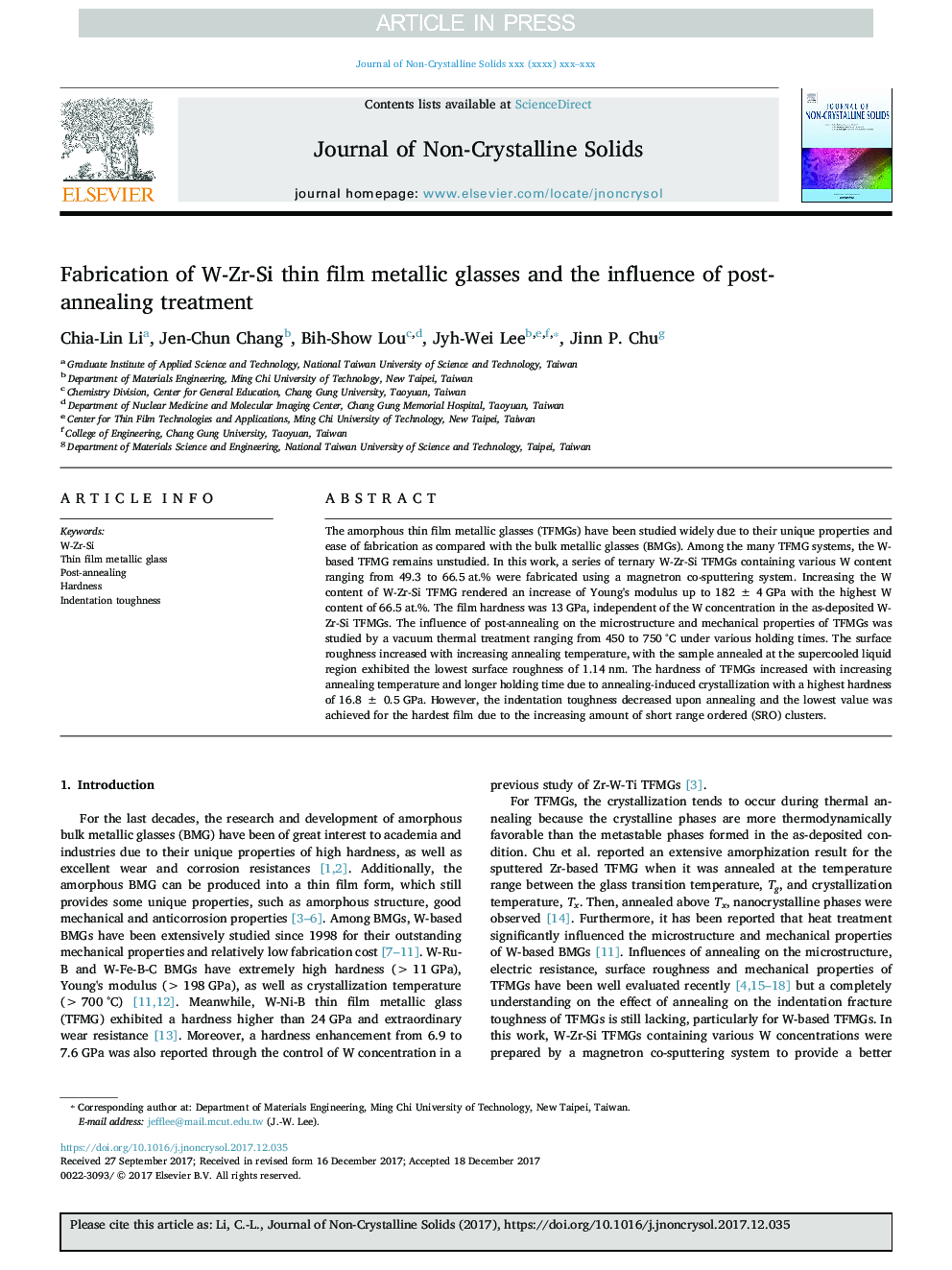| Article ID | Journal | Published Year | Pages | File Type |
|---|---|---|---|---|
| 7900256 | Journal of Non-Crystalline Solids | 2018 | 7 Pages |
Abstract
The amorphous thin film metallic glasses (TFMGs) have been studied widely due to their unique properties and ease of fabrication as compared with the bulk metallic glasses (BMGs). Among the many TFMG systems, the W-based TFMG remains unstudied. In this work, a series of ternary W-Zr-Si TFMGs containing various W content ranging from 49.3 to 66.5 at.% were fabricated using a magnetron co-sputtering system. Increasing the W content of W-Zr-Si TFMG rendered an increase of Young's modulus up to 182 ± 4 GPa with the highest W content of 66.5 at.%. The film hardness was 13 GPa, independent of the W concentration in the as-deposited W-Zr-Si TFMGs. The influence of post-annealing on the microstructure and mechanical properties of TFMGs was studied by a vacuum thermal treatment ranging from 450 to 750 °C under various holding times. The surface roughness increased with increasing annealing temperature, with the sample annealed at the supercooled liquid region exhibited the lowest surface roughness of 1.14 nm. The hardness of TFMGs increased with increasing annealing temperature and longer holding time due to annealing-induced crystallization with a highest hardness of 16.8 ± 0.5 GPa. However, the indentation toughness decreased upon annealing and the lowest value was achieved for the hardest film due to the increasing amount of short range ordered (SRO) clusters.
Related Topics
Physical Sciences and Engineering
Materials Science
Ceramics and Composites
Authors
Chia-Lin Li, Jen-Chun Chang, Bih-Show Lou, Jyh-Wei Lee, Jinn P. Chu,
